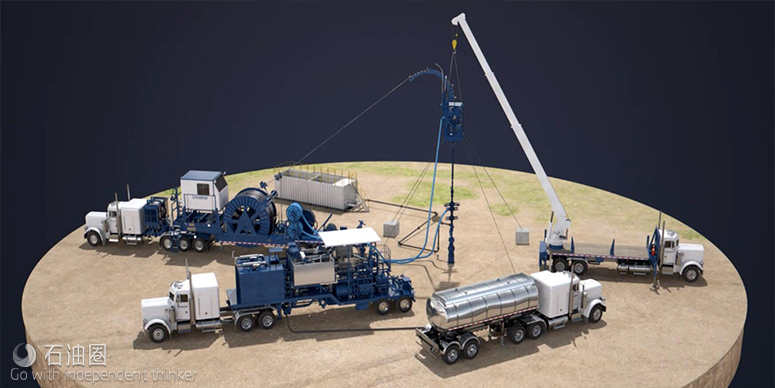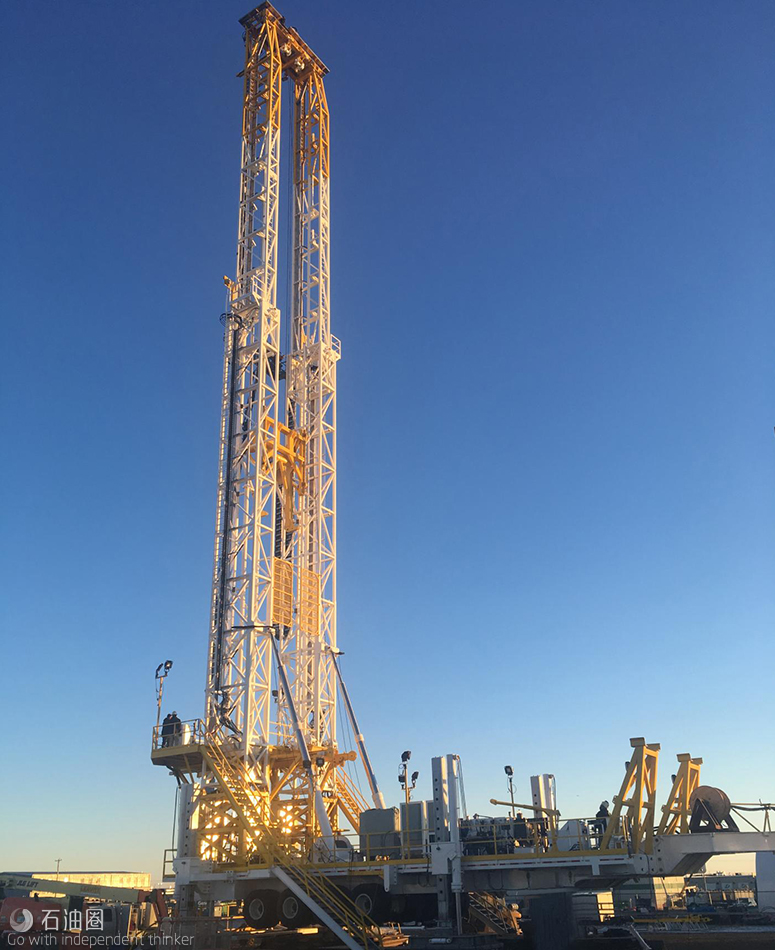Automation And Prognostics Transform CT Drilling Performance
Since emerging onto the oil field a half-century ago, coiled tubing (CT) has more than proved its worth as a highly reliable and robust well servicing and intervention method, continually reinventing itself to meet the rigors of increasingly complex reservoirs and wellbores.
While CT has been a game changer for many applications, its use as a drilling method has been slower to develop due to technological obstacles that have impeded adoption of the approach since it was introduced in the mid- to late 1990s. Deployed with a small diameter continuous-length tubing from a spooling reel and equipped with a mud motor for rotation, a CT drilling (CTD) system requires quick reactions to constantly changing downhole and surface conditions such as kicks, formation changes, well control issues, well placement decisions and drilling speed.
The technique is suited for challenging drilling conditions, including thru-tubing re-entry drilling applications and reservoirs where underbalanced drilling (UBD) is necessary to keep wellbore pressures lower than the formation pressure. A CTD rig typically requires less personnel and leaves a significantly smaller footprint than a conventional rig. Despite these advantages, a lack of coordination and integration has been problematic in consistently overcoming those operational complexities.
With recent technological advances, driven by automation and prognostics, CTD performance is being transformed through integration into a single, all- electric system with an all-electric automated CTD rig, a real-time directional bottomhole assembly (BHA) and an engineered underbalanced surface separation package.
Underbalanced CT drilling (UBCTD) is increasingly being recognized as the key to unlocking the potential of fractured carbonate and geologically complex sandstone reservoirs, often in live well conditions. The process delivers such benefits as producing the well throughout the drilling and completion processes and eliminating wellbore damage and, in many cases, reducing the need for subsequent well stimulation.
Currently, the Middle East leads the UBCTD market, but global expansion is on the horizon with development of the integrated system. Recently deployed for a large, multiwell project in the Middle East, the Schlumberger integrated CTD system incorporates advances in data communication, automation and functionality to deliver a fully connected and self-sustaining operation featuring digital telemetry and automated subsystems that enhance real-time decision-making. The all-electric system is designed to deliver high rates of data that enable fast-reaction subsystems to improve drilling efficiency and reduce risk by automating measurement of multiple downhole parameters, which include
Torque and weight-on-bit to drill faster, increase tripping speeds and prevent stalls;
Bottomhole pressure and pump rates to enhance well control and protect the formation from drilling damage; and
Bottomhole and surface pressure and temperatures to prevent slugs and kicks.
Eliminating risk, inefficiency
A key driver of the new integrated system was the need to move beyond the traditional fragmented approach to CTD that relies on deployment of separate services, often supplied by multiple vendors, and human decision-making, all of which lead to inefficiencies, interface risk, nonproductive time and inaccuracies. The result is technology that integrates all the aspects of the CTD operation to work synergistically to optimize operations, increase efficiency, reduce wellsite personnel and minimize overall HSE and operational risk.
The technology’s initial deployment is in a multiwell gas field in the Middle East, a region characterized by fractured carbonate reservoirs that must be drilled underbalanced to avoid fluid loss and formation damage in conjunction with the drilling process.
These formations often feature deep, hard and abrasive sandstones interbedded with shale and siltstone. With unconfined compressive strength of up to 35,000 psi and internal friction angles ranging from 25 degrees to 60 degrees, these fields are challenging to drill and reach desired lateral lengths. Openhole sidetracks in these conditions also are difficult to perform.
UBCTD has been undertaken successfully in the area since 2010. However, the integrated approach, with its capability of monitoring downhole measurements that can be connected to the surface in a continuous loop, will optimize the process by improving ROP, reducing risk and increasing formation contact, enabling quicker decision-making than conventional UBCTD applications.
The centerpiece of the technology is the automated XTD4 CTD rig, which captures data and provides command and control of the entire CTD operation. The rig design builds on the success of the AC-powered, high-capacity CT injector, which has been the foundation of the XTD rigs that have drilled 201,168 m (660,000 ft) since 2010 without a major shutdown. The injector utilizes an AC drive and control systems and a drilling-specific, heavy-duty design, specifically for desert conditions, that can provide 200,000 lb of pull with high-definition control coupled to downhole sensors.
The redesigned XTD4 rig is engineered to efficiently and safely deploy drilling BHA and optimize loads and service interfaces for efficient rig moves, reducing rigup and rigdown operations by 20%. All services are integrated through the plug-and-play digital hub and command center. Automated operations reduce workloads and protect personnel through safety interlocks on systems.
The underbalanced surface separation package, introduced in 2016, was engineered to prevent, detect and mitigate potential well control events and optimize wellbore stability during UBD operations. The system’s fully automated operating system and durable control and safety protocols provide remote real-time control and monitoring. The modular, trailer-mounted equipment ensures compact and efficient rigup and safely controls, separates, measures and redirects the drilling and produced hydrocarbon fluids with a minimal footprint, while the plug-and-play instrumentation and hub facilitate integration with all services.
The surface separation package features customized applications of the Diligens mobile production testing technology, designed for quick rigup and rigdown so multiple wells can be tested per day. The mobile production testing unit receives and processes effluents to support workover operations during well cleanout. Further expanding the operational envelope is a multiphase production testing unit, which contains two multiphase flowmeters on the same skid to provide repeatable flow-rate measurements in any multiphase scenario.
Increasing reservoir exposure, minimizing damage
The platform also incorporates the Schlumberger CTDirect CT directional drilling system, a continuously oriented BHA that minimizes reservoir damage in underbalanced operations.
Integrating in real time with the rig and the underbalanced surface separation package, the CTDirect system provides measurements of downhole drilling mechanics data, shock and vibration, inclination, gamma ray, azimuth and toolface, seamlessly transmitting the data to surface where it is continuously monitored at the wellsite for precise directional control and immediate drilling performance decision-making.
This builds on more than four years of continuous operations in which the system drilled more than 100 lateral sections and 47,853.6 m (157,000 ft), reaching build rates of up to 40 degrees per 30 m (100 ft). The system achieved a 200% increase in ROP versus the field average using a conventional BHA, resulting in earlier payout and lower well stimulation costs. It has been instrumental in delivering 300% to 700% more production from re-entry wells when compared to directional drilling.
The fully integrated solution overcomes the operational limitations that have hindered mainstream adoption of the technique. By enhancing efficiency while reducing risk and nonproductive time, this approach is expected to expand potential of underbalanced CT drilling in challenging formations.

 石油圈
石油圈

